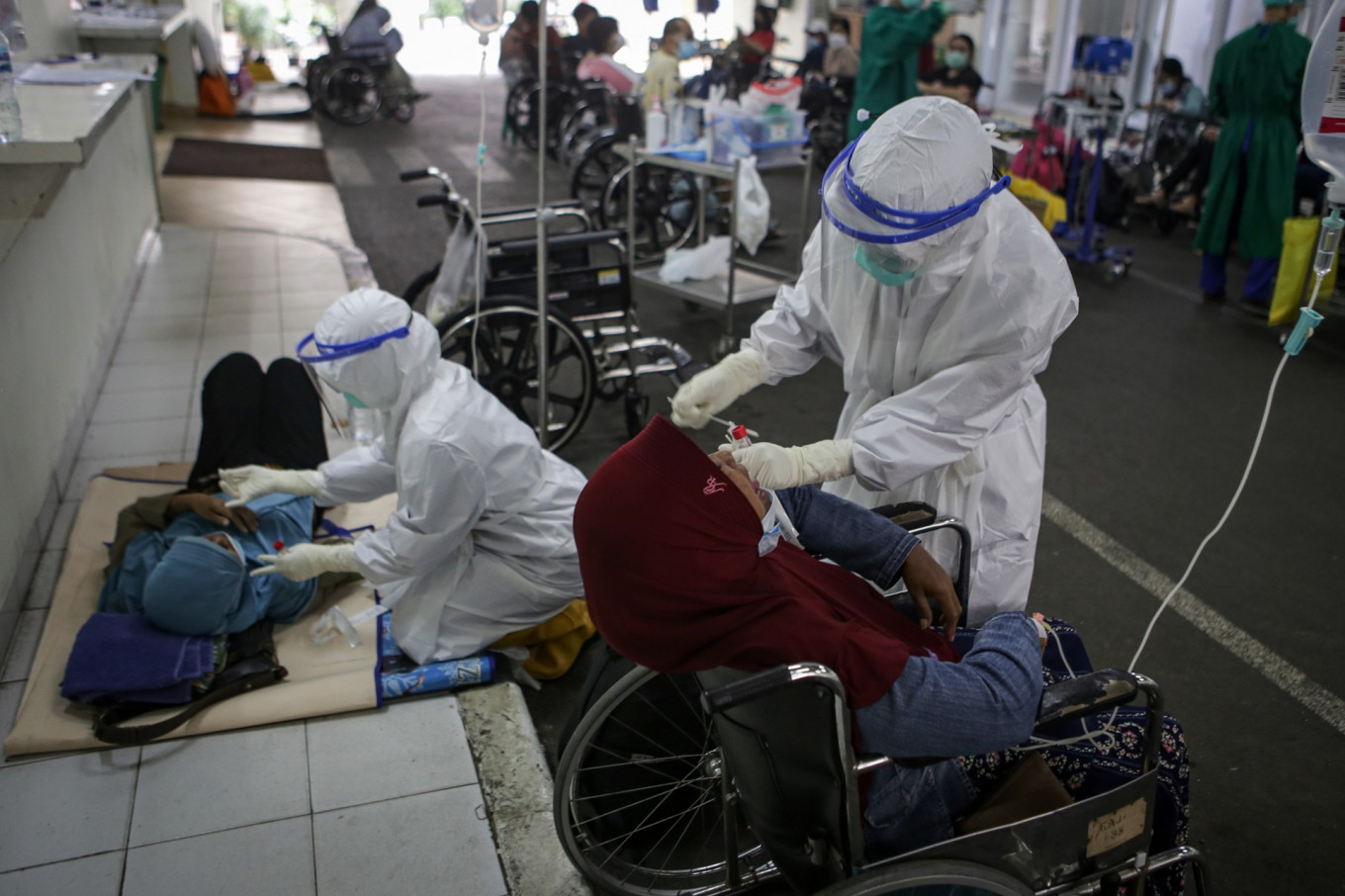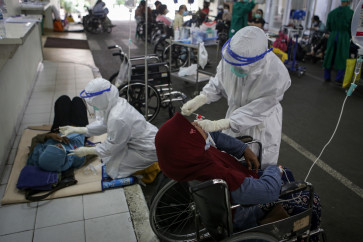Popular Reads
Top Results
Can't find what you're looking for?
View all search resultsPopular Reads
Top Results
Can't find what you're looking for?
View all search resultsIndonesia’s static positivity rate highlights persisting gaps in testing capacity, capability
Despite the ongoing nationwide surge in COVID-19 cases, the positivity rate has remained relatively unchanged, a sign that Indonesia's pandemic response is still hamstrung by low testing capacity and a shortage in medical resources.
Change text size
Gift Premium Articles
to Anyone
W
hile Indonesia has been seeing a surge in COVID-19 cases in the past few weeks, the official public health records on the positivity rate has remained relatively unchanged, raising questions about the country’s testing capability.
The country has recorded a rise in daily cases nationwide since June 17, with the latest peak falling on June 26 with 21,095 new cases, the highest single-day figure since Indonesia recorded its first COVID-19 cases in March 2020. This is almost 1.5 times the peak of the first wave in late January, which reached around 14,000 daily cases.
However, the nation’s overall positivity rate has ranged from 17 to 22 percent throughout.
According to Johns Hopkins Bloomberg School of Public Health, the positivity rate, also called the “percent positive” or the “percent positive rate”, is “the percentage of all coronavirus tests performed that are actually positive”. The rate is “a critical measure because it gives us an indication how widespread infection is in the area where the testing is occurring – and whether levels of testing are keeping up with levels of disease transmission”, it adds.
Essentially, it is the key data for health officials to monitor the spread of COVID-19 in an area and to make policy decisions on its pandemic response, including mobility restrictions.
Read also: Indonesia sticks with ‘micro-lockdown’ amid COVID-19 tsunami
The positivity rate varies greatly between the two most common types of COVID-19 tests used in Indonesia: the polymerase chain reaction (PCR) test, deemed the “gold standard” for detecting the coronavirus, and the antigen rapid test, also called antigen test or rapid test.


















